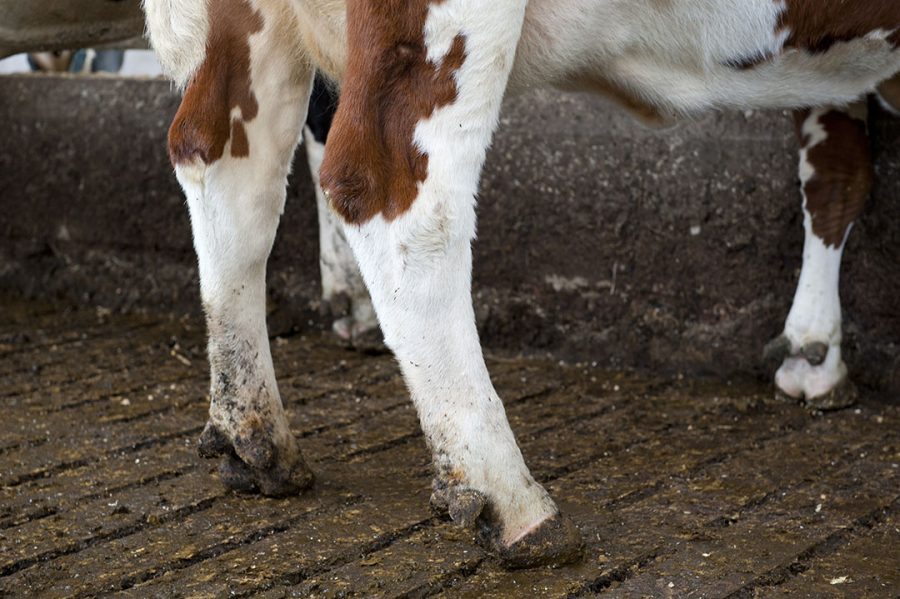Understand why nitrate levels in your farm’s forage matter. Learn the difference between NO3- and NO3-N and keep your feed safe.
Summary: As a dairy farmer, maintaining your herd’s health is paramount, and understanding how your forage tests report nitrate levels could make a significant difference. Nitrates can appear as either nitrate ions (NO3-) or nitrate nitrogen (NO3-N), and knowing the distinction could mean the difference between safe feed and potential toxicity. NO3- becomes concerning at 9,000-10,000 ppm, while NO3-N raises flags at 2,000-2,300 ppm. Understanding these metrics is crucial for interpreting results accurately, safeguarding your herd’s health, and preventing issues like sluggishness, respiratory distress, and even sudden death due to nitrate toxicity. Prolonged exposure to high nitrate levels can also have long-term consequences, including reduced milk output and impaired reproductive function. Look closely at the report to see what method your lab used to report nitrate results.
- High nitrate levels in forage can lead to nitrate toxicosis in livestock, affecting their health and productivity.
- Understanding the difference between nitrate ions (NO3-) and nitrate nitrogen (NO3-N) is crucial, as their toxicity thresholds vary significantly.
- NO3- levels are concerning at 9,000-10,000 ppm; NO3-N levels become problematic at 2,000-2,300 ppm.
- Regular and accurate testing of forage samples is essential to ensure feed safety and prevent nitrate-mediated health issues.
- Proper interpretation of forage test results can prevent symptoms like sluggishness, respiratory distress, and sudden death in cattle.
- Long-term exposure to high nitrate levels can reduce milk production and impair reproductive health.
- Farmers should review their lab reports carefully to understand which nitrate measurement method was used.

Are you confident in your interpretation of the forage test findings? Understanding nitrate levels in your forages could be the difference between a thriving dairy farm and one plagued by sick animals and low output. High nitrate levels can harm your dairy cows, leading to significant health issues and even death. The precision in interpreting fodder test results is not just about numbers; it’s about safeguarding the health and efficiency of your herd. The potential risks of misinterpretation are real and urgent.
Unveiling the Nitrate Mystery: NO3- vs. NO3-N
When addressing nitrate testing, it’s essential to understand that there are two ways to detect nitrates: one for the nitrate ion (NO3-) and another for nitrate nitrogen (NO3-N). This differentiation is more than a fancy name; it influences how you perceive the data.
Nitrate is composed of one component, nitrogen, and three parts, oxygen. So, nitrogen only accounts for around 22.6% of the total nitrate ion. When laboratories test for nitrates, some measure the whole nitrate ion (NO3-), while others detect the nitrogen component (NO3-N).
So, why does this matter? The permissible nitrate levels vary depending on the measuring method employed. For example, NO3- levels between 9,000 and 10,000 ppm cause alarm. However, for NO3-N, the danger zone is substantially lower, at roughly 2,000-2,300 ppm. This implies that you must understand the procedure used by your lab to assess the safety of your feed appropriately.
Why Distinguishing Between NO3- and NO3-N Matters for Your Herd
Understanding the differences between NO3—and NO3-N in your feed test findings is more than semantics; it may impact your herd’s health and safety. Imagine you’ve got your lab results but aren’t sure which measurement was recorded. This ambiguity might lead to severe errors in determining the feed’s safety.
The toxicity hazard levels for NO3- and NO3-N are dramatically different. Nitrate ion (NO3-) levels between 9,000 and 10,000 ppm become worrisome. In striking contrast, the danger zone for nitrate nitrogen (NO3-N) begins significantly lower, at 2,000-2,300 ppm.
With this critical difference, you avoid overreacting to benign nitrate levels or underestimating a serious toxicity concern, perhaps injuring your cattle. As a result, always verify that you’re comparing apples to apples—double-check whether your lab reports nitrate as NO3- or NO3-N before making any choices about the safety of your forage.
Recognize the Red Flags: Signs and Consequences of Nitrate Poisoning in Your Herd
High nitrate levels may be detrimental to the health of your dairy herd. Nitrate poisoning, a severe consequence of high nitrate levels in forage, presents frighteningly. Have you seen a sudden decrease in milk production? Are your cows losing weight for no apparent reason? These might be early indications of nitrate toxicity.
When cows ingest nitrate-rich forages, their bodies convert the nitrates to nitrites, interfering with the blood’s capacity to transport oxygen. The result? Animals may become sluggish exhibit symptoms of respiratory distress, and their mucous membranes may even become bluish—a disease known as cyanosis. In extreme circumstances, this might result in abrupt death.
Aside from these immediate symptoms, prolonged exposure to high nitrate levels might have long-term consequences. Reduced milk output, reduced development, and impaired reproductive function are only a few possible effects. None of these are difficulties that any dairy farmer wants to confront.
Understanding and regulating nitrate levels in your pasture is more than simply keeping figures on a report; it is also essential for assuring the health and productivity of your herd. Such findings highlight the need for adequate nitrate control in dairy production.
Getting the Numbers Right: How to Read Your Forage Test Results for Optimal Herd Health
As a farmer, the health of your herd hinges on accurate data. So, how do you make sure you’re interpreting your forage test results correctly? Here are some practical tips:
1. Scrutinize the Lab Report
The first step is to scrutinize your lab report. Know which method the lab used to report nitrate results—nitrate ion (NO3-) or nitrate nitrogen (NO3-N). This detail is crucial because the safety thresholds significantly differ between the two.
2. Use Conversion Formulas
If you need to convert the results for any reason, use these formulas:
- Nitrate (NO3-) = Nitrate Nitrogen (NO3-N) x 4.43
- Nitrate Nitrogen (NO3-N) = Nitrate (NO3-) x 0.226
3. Compare Apples to Apples
When discussing test results with nutritionists or consultants, ensure everyone is on the same page regarding the metrics. This will prevent misunderstandings and avoid potential risks to your herd, such as feeding your cattle with unsafe forage or misdiagnosing health issues.
Staying informed and vigilant can make all the difference in your farm’s health and productivity. Remember, accurate data isn’t just numbers—it’s peace of mind. By staying informed and vigilant, you can take control of your farm’s health and productivity, empowering yourself as a dairy farmer.
The Bottom Line
Understanding the difference between NO3- and NO3-N is not just a technicality; it’s a critical aspect of appropriately analyzing nitrate levels in your feed. This understanding directly influences the health and safety of your herd. You can avoid potential toxicity difficulties by making well-informed judgments using suitable sampling procedures and careful attention to forage test findings. So, the question remains: are you sure about the safety of the feed?













